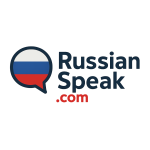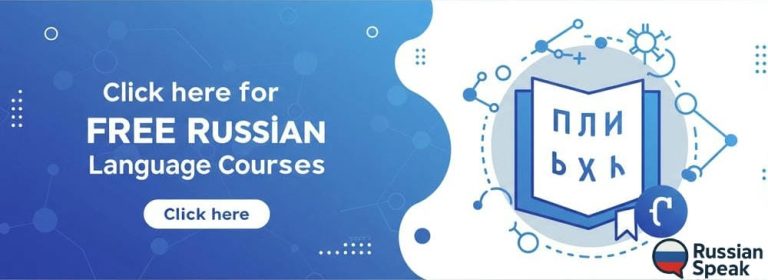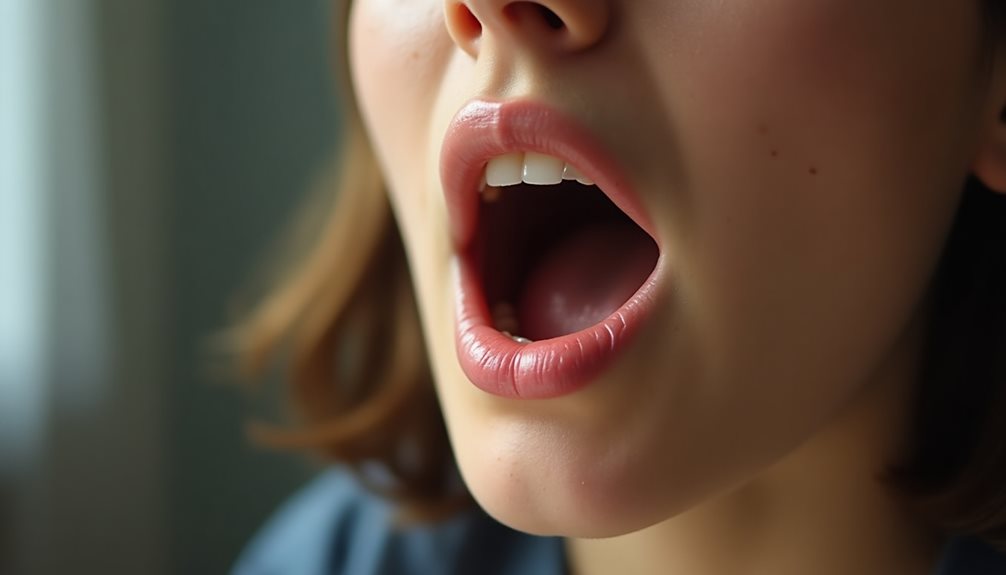The pronunciation of Russian consonant clusters presents unique challenges for learners. These clusters, often consisting of multiple consonants, require careful attention to articulatory precision. The complexity increases with the influence of stress patterns, which can alter sound production. Understanding the types of clusters and common pitfalls is essential for effective communication. Exploring targeted practice techniques may reveal pathways to improved fluency and articulation. What specific strategies can learners employ to master these intricate sound combinations?
Table of Contents
ToggleUnderstanding Russian Consonant Clusters

While the intricacies of Russian phonetics can be challenging, an examination of consonant clusters reveals a systematic approach to sound combinations in the language.
Russian features a variety of consonant clusters, showcasing distinct phonetic nuances that characterize its spoken form. These clusters often consist of two or more consonants occurring consecutively, influencing both pronunciation and syllable structure.
Importantly, cluster variations can be observed in different phonetic environments, where adjacent sounds may exhibit assimilation or elision. Such phenomena not only contribute to the rhythmic quality of Russian speech but also underscore the complexity of its phonological system.
Understanding these elements is essential for learners seeking to navigate the subtleties of Russian pronunciation effectively, enhancing their overall linguistic freedom and expression.
Common Types of Consonant Clusters
Consonant clusters are groups of two or more consonant sounds that appear together without vowels separating them. Russian is known for having many complex consonant clusters, which can make pronunciation challenging for learners, especially those whose native language rarely uses such combinations. Understanding the types of clusters and their specific features is important for speaking Russian clearly.
Types of Consonant Clusters in Russian
1. Two-Consonant Clusters
These are the most basic type and quite common in Russian. The pronunciation is generally straightforward, and many words begin with two consonants. For example:
- ст in стол (stol) – [stol], meaning “table.”
- ст: Pronounced [st]. English phonetic: “st” as in “stop.”
- гр in гром (grom) – [grom], meaning “thunder.”
- гр: Pronounced [gr]. English phonetic: “gr” as in “grab.”
These clusters usually appear at the beginning or in the middle of words and are easy to pronounce once you get used to Russian sounds.
2. Three-Consonant Clusters
Three-consonant clusters are more complex and often cause difficulty for learners. They can occur at the beginning, middle, or end of words, and require careful articulation.
- встр in встретить (vstretit’) – [fs-trʲe-tʲitʲ], meaning “to meet.”
- вст: Pronounced [fst]. English phonetic: similar to “f” + “st” in “fast” (but said together with no vowel).
- скр in скрипка (skripka) – [skrʲip-ka], meaning “violin.”
- скр: Pronounced [skr]. English phonetic: “skr” as in “scream.”
These clusters often combine sounds that are not found together in English, so practice is needed to blend them smoothly without inserting extra vowels.
3. Word Boundary Clusters
Clusters can also occur at the boundary between words, especially when a word ending in a consonant is followed by a word beginning with another consonant. This can change how the sounds are pronounced due to processes like assimilation (one sound becoming more like its neighbor) or elision (dropping a sound).
- небес клёк (nebes klyok) – “of the heavens’ bell,” where the final “с” and first “к” come together.
- небес: [nʲɪˈbʲes]
- клёк: [klʲok]
- In fast speech, you might hear:
- Assimilation: “с” might sound more like “к” due to influence from the following “к.”
- Elision: Sometimes one of the consonants is dropped, especially in casual speech.
4. Dialectal Variations
Different Russian regions may pronounce clusters differently. For example, in some dialects, speakers might insert a slight vowel sound (called an epenthetic vowel) to break up difficult clusters, making them easier to say. For instance:
- встретить (vstretit’) may be pronounced closer to [vəs-tre-titʲ] in certain dialects.
5. Common Cluster Patterns
Some consonant combinations appear very frequently in Russian, and getting used to these will improve your fluency:
- сп as in спать (spat’, “to sleep”) – [spatʲ]
- зн as in знать (znat’, “to know”) – [znatʲ]
- тр as in труд (trud, “work”) – [trut]
Key Russian Words and Useful Phrases
Here are some useful words and phrases related to the topic:
- согласный кластер (soh-GLAHS-nyi KLAH-ster) – consonant cluster
- двойной согласный (dvoy-NOY soh-GLAHS-nyi) – double consonant
- тройной согласный (troy-NOY soh-GLAHS-nyi) – triple consonant
- произношение (pro-eez-nah-SHEH-nie) – pronunciation
- упрощение кластеров (oo-proh-SHEN-iye KLAH-steh-rof) – simplification of clusters
Interesting Facts
Russian words can start with up to four consonants in a row, though this is quite unusual and typically found in technical, scientific, or borrowed vocabulary. For example:
- вскользь (vskolz’) – [fskoɫʲsʲ], meaning “in passing” or “casually.”
- The cluster “вск” ([fsk]) appears at the beginning.
- встряхнуть (vstryakhnut’) – [fstrʲɪxˈnutʲ], meaning “to shake.”
- The initial “встр” ([fstr]) is a four-consonant cluster.
Such words are more challenging for learners because there are no vowels to break up the sounds at the beginning. Even native speakers sometimes slow down or slightly change their pronunciation to make them easier to say.
The most complex clusters often show up in words borrowed from other languages or in scientific terminology. For instance:
- псевдонаука (psevdonauka) – [psʲɪvdənaˈukə], meaning “pseudoscience.”
- The cluster “пс” ([ps]) at the beginning is borrowed from Greek.
- стратег (strateg) – [strɐˈtʲek], meaning “strategist.”
- The initial “стр” ([str]) is common in technical terms.
Children who are native Russian speakers also find these combinations difficult at first. When learning to speak, they often simplify clusters by dropping one of the consonants or inserting a short vowel sound. For example, a small child might say “тетить” instead of “встретить” (to meet), skipping over the tricky “встр” ([fstr]) cluster. This process is called cluster simplification and happens naturally as children develop speech skills. Adult learners of Russian often experience similar challenges and may need focused practice to pronounce these clusters correctly.
Mastering consonant clusters takes practice and careful listening. Try repeating difficult words slowly at first, then speed up as you gain confidence. This will help you sound more natural when speaking Russian.
The Role of Stress in Pronunciation
Stress plays a critical role in Russian pronunciation, especially when it comes to consonant clusters—groups of two or more consonants next to each other in a word. In Russian, the placement of stress (ударение, [oo-dah-RYE-nee-ye], meaning “stress” or “accent”) directly affects how both vowels and consonants are pronounced. Unlike English, where vowel sounds often stay similar regardless of stress, Russian vowels can change dramatically depending on whether they are in a stressed or unstressed syllable.
Why Stress is Important
When a syllable is stressed in Russian, the vowel sound is clear and full. For example, the vowel “о” in the stressed syllable is pronounced as [o] (like “o” in “more”), but in an unstressed position, it often turns into [a] or even a very soft [ə] (like the “a” in “about”). This process is called vowel reduction (редукция гласных, [ree-DOOK-tsi-ya GLAS-nykh]).
This reduction can make unstressed vowels harder to hear and distinguish. As a result, the consonants that surround these vowels—especially when many consonants are together—can become more challenging to pronounce clearly. For learners, this can sometimes lead to misunderstandings or make their speech sound unnatural.
Example:
- молоко́ ([ma-la-KO], “milk”)—the stress is on the last syllable. The first “о” sounds more like “a,” and only the final “о” is pronounced clearly.
Consonant Clusters and Stress
Russian has many words with consonant clusters, such as встреча ([VS-tree-CHA], “meeting”) or здравствуйте ([ZDRAV-stvooy-tye], “hello”). When stress falls near these clusters, it influences:
- The clarity of the vowels between the consonants
- The ease or difficulty of articulating the cluster
If the vowel before or after a cluster is unstressed, it might become so weak that it almost disappears in fast speech. This can make the cluster even more difficult for non-native speakers to pronounce.
Examples of words with consonant clusters:
- встре́ча ([VS-tree-CHA], “meeting”)
- здра́вствуй ([ZDRAV-stvooy], informal “hello”)
- взгляд ([VZGLYAT], “look” or “glance”)
Stress Patterns and Common Mistakes
For English speakers learning Russian, one common mistake is to pronounce every vowel clearly, regardless of stress. This not only sounds unnatural but can also change the meaning of a word. Consider:
- за́мок ([ZA-mak], “castle”) versus замо́к ([za-MOK], “lock”)
Both words are spelled the same but have different meanings based on where the stress falls.
Tips for Mastering Russian Stress and Pronunciation
- Listen carefully to native speakers and pay attention to which syllables are stressed.
- Practice pronouncing words with consonant clusters, focusing on letting the unstressed vowels become softer.
- Learn word stress as part of the vocabulary; don’t assume it’s always on the first syllable.
Useful Russian words and phrases:
- ударе́ние ([oo-dah-RYE-nye], “stress/accent”)
- безударный слог ([bee-zoo-DAR-ny SLOG], “unstressed syllable”)
- гласная редукция ([GLAS-na-ya ree-DOOK-tsi-ya], “vowel reduction”)
- согласный кластер ([soh-GLAS-nyi KLAHS-ter], “consonant cluster”)
Understanding how stress changes pronunciation in Russian is essential for clear speech and comprehension. Paying close attention to stress patterns will not only help you sound more natural but also make your speech much easier for native speakers to understand.
Tips for Practicing Consonant Clusters in Russian
Consonant clusters (groups of two or more consonants without a vowel between them) can be difficult for English speakers learning Russian. Russian often puts several consonants together—sometimes three or even four—which is rare in English. Mastering these clusters is important for speaking clearly and being understood.
1. Start with Common Clusters
Begin with clusters that are easier and more common in Russian. Work your way up to more difficult ones as you gain confidence.
Examples:
- вст as in вста́ть (vstat’, “to get up”)
- стр as in стро́йка (stroyka, “construction site”)
- зд as in здоро́вье (zdorov’ye, “health”)
- мн as in мне (mne, “to me”)
2. Practice With Repetition
Say words with clusters out loud many times. Focus on pronouncing each consonant clearly at first, then try to say the word more smoothly.
Drill Example:
Repeat the word “вста́ть” (vstat’) slowly:
/ v / — / s / — / t / — / a / — / t’ /
Then speed up: v-s-t-a-t’
3. Break Words Into Parts
If a word feels too hard, break it into smaller parts. Practice each part by itself, then put them together.
Example:
The word “стро́йка” (stroyka):
- Practice “стр” (str)
- Practice “ойка” (oyka)
- Then say the whole word: стро́йка (stroyka)
4. Use Minimal Pairs
Practice pairs of words that only differ by the cluster. This helps you train your ear and mouth to hear and make the difference.
Examples:
- мне (“mne”, to me) vs. не (“ne”, not)
- вста́ть (“vstat’”, to get up) vs. стать (“stat’”, to become)
5. Record and Listen to Yourself
Use your phone or computer to record your pronunciation. Listen back and compare it to native speakers. Notice which clusters are hard for you and practice those more.
6. Practice with Native Speaker Audio
Find slow recordings of native Russian speakers and repeat after them. Imitate their pronunciation as closely as possible.
Common Russian Consonant Clusters
| Cyrillic | Phonetic | English Definition |
|---|---|---|
| мг | [mg] | mg, as in мгнове́ние (moment) |
| вн | [vn] | vn, as in вне (outside) |
| ст | [st] | st, as in стол (table) |
| стр | [str] | str, as in строка́ (line) |
| зд | [zd] | zd, as in здоро́вье (health) |
| чт | [cht] | cht, as in что (what) |
| скр | [skr] | skr, as in скрывать (hide) |
| пт | [pt] | pt, as in пятница (Friday) |
| дв | [dv] | dv, as in дверь (door) |
| мгл | [mgl] | mgl, as in мгла́ (mist, haze) |
Extra Tips
- Focus on one or two clusters at a time.
- Don’t rush—accuracy is more important than speed at first.
- Use tongue twisters for advanced practice.
By breaking down the clusters, practicing them regularly, and using feedback from recordings and native audio, you will improve your pronunciation and become more confident handling Russian consonant clusters.
Common Mistakes to Avoid
Many learners of Russian often encounter specific pitfalls when attempting to master consonant clusters. One prominent issue is cluster confusion, where learners misinterpret the arrangement of sounds, leading to inaccurate pronunciation. For instance, substituting single consonants for clusters can result in misunderstandings, as the intent and meaning may shift entirely.
Additionally, learners might overlook the importance of syllable boundaries, causing them to merge sounds incorrectly. Another common mistake involves over-articulating consonants, which disrupts the natural flow of speech and creates unnecessary tension.
Finally, neglecting to practice with native speakers can inhibit the acquisition of authentic pronunciation patterns. Awareness of these pronunciation pitfalls is essential for learners seeking to achieve clarity and fluency in their Russian communication.
Listening and Imitation Techniques

Mastering Russian consonant clusters can be challenging for learners whose native languages lack similar sound combinations. Effective listening and imitation techniques are crucial for overcoming these difficulties and achieving authentic pronunciation.
Active Listening
Active listening involves more than just hearing the sounds of Russian—it requires focused attention on the nuances of native speech. Learners should routinely listen to diverse audio sources, such as news clips, podcasts, and conversational dialogues by native speakers. Paying close attention to how consonant clusters are produced in different words and contexts allows learners to recognize features like voicing, devoicing, assimilation, and reduction. For example, in the word “встреча” (vstrecha), the initial cluster “встр” is pronounced smoothly and quickly, which is often challenging for non-native speakers. By isolating these clusters during listening exercises, learners can start to distinguish between subtle sound differences that may not exist in their own language.
Phonetic Imitation
Phonetic imitation is the process of closely modeling one’s pronunciation after native speakers. This technique goes beyond mere repetition. Learners should focus on the exact placement of the tongue, lips, and jaw when producing Russian consonant clusters. Shadowing exercises—where learners speak simultaneously with a recording—are particularly effective for training the mouth muscles and developing automaticity. Frequent practice with challenging clusters, such as “зд” in “здравствуйте” (zdravstvuyte) or “мн” in “внимание” (vnimanie), helps build muscle memory and confidence. Recording oneself and comparing with native pronunciation can further highlight areas for improvement.
Contextual Practice
Contextual practice places consonant clusters within meaningful communication. Instead of practicing isolated words, learners benefit from using clusters in phrases and sentences, reflecting how Russian is spoken in everyday life. Role-playing common scenarios (such as ordering food or asking for directions) ensures that learners not only pronounce clusters accurately but also use them fluently under real communicative pressure. Participating in language exchanges or conversation groups with native speakers provides immediate feedback and opportunities to adjust pronunciation in real time.
By systematically combining these techniques—attentive listening, detailed imitation, and practical usage—learners address both the perceptual and physical aspects of Russian pronunciation. This approach leads to noticeable improvements in clarity, naturalness, and overall communicative ability when navigating Russian consonant clusters.
Conquer Russian Consonant Clusters: Your Path to Clear, Confident Speech
Mastering Russian consonant clusters might seem daunting, but it’s absolutely within reach. By breaking down tricky sound combinations, paying close attention to stress, and using focused practice strategies, learners can turn these pronunciation hurdles into stepping stones toward fluency. Remember, clarity comes from careful listening, patient repetition, and a willingness to imitate native speakers—mistakes are just part of the journey.
With consistent effort and the right techniques, you’ll not only pronounce Russian words more naturally but also gain the confidence to engage in real conversations. Embrace the challenge, celebrate your progress, and soon those once-intimidating clusters will be an integral—and effortless—part of your Russian communication toolkit. Keep practicing, stay curious, and let your newfound skills open up the rich world of Russian language and culture!
Quick Quiz for Confident Pronunciation
Question 1
Which of the following Russian words contains a three-consonant cluster at the beginning?
A) стол (stol)
B) встретить (vstretit’)
C) знать (znat’)
Correct answer: B) встретить (vstretit’)
Question 2
What is a common mistake English speakers make when pronouncing Russian words with consonant clusters?
A) Ignoring stress and always pronouncing vowels clearly
B) Adding extra vowels between consonants
C) Both A and B
Correct answer: C) Both A and B
Question 3
How can a learner most effectively practice Russian consonant clusters for accurate pronunciation?
A) Only read words silently in their head
B) Listen to native speakers, repeat out loud, and record themselves
C) Skip difficult clusters and focus on easy words
Correct answer: B) Listen to native speakers, repeat out loud, and record themselves
![]()
Frequently Asked Questions
How Do Consonant Clusters Affect Russian Syllable Structure?
Consonant clusters greatly influence Russian syllable structure through syllable breakdown and cluster simplification. These phonetic phenomena determine syllable integrity, affecting pronunciation patterns and ultimately shaping linguistic fluidity within the Russian language framework.
Are There Regional Variations in Consonant Cluster Pronunciation?
Regional variations in consonant cluster pronunciation exhibit notable differences, particularly between Moscow dialects and Siberian accents. These variations provide compelling regional examples, illustrating how geographical factors influence phonetic characteristics and contribute to distinct pronunciation differences across Russian-speaking areas.
Can Consonant Clusters Change Meaning in Russian Words?
Consonant clusters in Russian can indeed alter meaning distinctions. For example, the cluster ‘ст’ in “стол” (table) versus ‘сл’ in “слон” (elephant) demonstrates how slight variations can lead to entirely different interpretations within the language’s phonetic structure.
What Role Do Consonant Clusters Play in Russian Poetry?
Consonant clusters greatly influence Russian poetry by enhancing poetic rhythm. Their intricate arrangements contribute to sound patterns, allowing poets to manipulate meter and flow, ultimately enriching the emotional and aesthetic experience conveyed through their verses.
How Can Native Speakers Help With Pronunciation Practice?
Native speakers can provide valuable feedback on pronunciation techniques, enabling learners to refine their skills. Their insights foster a deeper understanding of phonetic nuances, enhancing overall communication proficiency and promoting confidence in language use.



